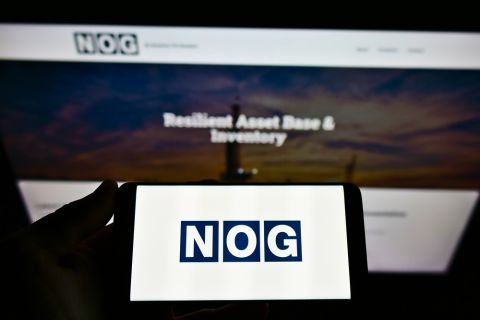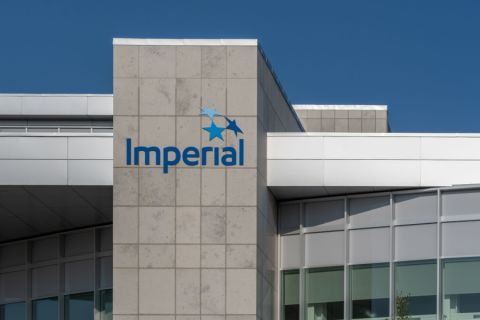When Petrobras made what was then called the Tupi discovery in the new presalt play offshore Brazil, it kicked off a storm of interest in this new type of play, and many companies began to look for analogs on the other side of the Atlantic.
Cobalt International Energy was already there.
The company, formed in 2005, spent its first few years of existence examining data from around the world to find promising areas. The three founders had extensive deepwater and subsalt experience and were not timid about exploring for these kinds of reserves.
“The reason we focused on deepwater in and around salt was, first of all, that’s where we thought the best oil reserves were likely to be found,” said James W. Farnsworth, chief exploration officer and one of Cobalt’s founders. “It also happened to be our area of expertise, and we’ve been very disciplined about sticking to what we know.”
The young company was initially focused on the Gulf of Mexico (GoM), successfully participating in the major deepwater GoM OCS lease sales in 2007 and 2008, but it also wanted an international footprint. Through a lot of regional work, the company decided to focus on West Africa. Early on, Cobalt licensed a large 2-D dataset across all of West Africa and migrated it from time into depth.
“No one had done this before, so we were instrumental in pushing that and using it to identify and rank various play types,” Farnsworth said. Added Christopher Olson, a senior geologist working West Africa and new ventures, “All of the 2-D data was regional prestack time (PSTM) data of various vintages. Taking that time data and both stretching and reprocessing it to depth improved our image below the salt and allowed us to construct a regional framework for the presalt play.
“We never would have been as successful if we hadn’t taken that initial step to specifically reprocess the data to be able to see below salt,” Olson said.
After considering multiple opportunities, these efforts ultimately landed Cobalt in the Kwanza Basin, an area they referred to as “a graveyard” from multiple failed drilling attempts in the 1980s and 1990s. “Most of the Kwanza Basin’s exploration history has been focused on post-salt Albian objectives,” Olson said. “The Albian source rocks in the basin are immature. Really, those early wells never had a chance because they’d have to be sourced from presalt source rocks, which were also largely immature in the basin’s shallow-water areas.”
Fortunately, a few of these early post-salt wells drilled exploration tails that penetrated the presalt section and provided critical data used by Cobalt years later.
Ultimately, with the lack of success in the Kwanza Basin, the industry moved north to the Lower Congo Basin, which turned out to be much more prospective.
But more recently geologists have realized that there are likely to be rich source rocks below the salt. “We figured that if we could combine these rich source rocks with some reservoirs, we would have a fantastic play because it was sealed by salt,” Farnsworth said. “That goes back to why we invest in seismic.” He added that the few post-salt wells that did have oil shows in the Kwanza Basin indicated that the oil migrated from presalt source rocks.
“We had suggestions that something should be working,” Olson said. “But we initially had no clue what the reservoirs would really entail.”
There were other uncertainties as well. Cobalt explorationists were bullish on the play but had a few questions: Are the reservoirs present, and where are they? Do deeper seals exist? Are the source rocks present and mature? “We had some hints,” Farnsworth said.
What they didn’t have was the knowledge that the presalt play was about to become big news offshore Brazil. “It would be nice to say that we saw what was going on in Brazil and we put the story together,” he said. “It didn’t actually work that way.” Cobalt acquired its acreage both in Angola and Gabon before the Tupi discovery well reached total depth, he added.
Nevertheless, Angola was happy to see them. “Nobody wanted to touch the Kwanza Basin because it had been so unsuccessful,” he said. “And Angola was also intrigued by the idea of real presalt potential within the basin.”
Better living through seismic
The depth-processed data enabled Cobalt’s exploration staff to start identifying structures below the salt. “We could identify where real structures were at the base of salt as opposed to being artifacts from post-salt velocity overprints,” Olson said.
But the 2-D data still had their limitations, so they were primarily used to build a regional petroleum system model to determine which blocks to focus on. A preexisting 3-D PSTM survey was later reprocessed to depth and then studied. Finally, the company acquired its own proprietary 3-D surveys.
“Each of the surveys we acquired was incrementally better, and by the time we were acquiring data in Block 20, it was a real step-change for us,” Olson said.
Sweet smell of success
Cobalt’s homework has since paid off. “It’s relatively rare for anyone to go from first entry into a basin to making a discovery right off the bat and following it up with four other discoveries,” Farnsworth said. “It’s been a lot of fun.”
As of this year the company has drilled the Cameia, Orca, Lontra, Mavinga and Bicuar discovery wells offshore Angola and participated as a partner in the successful Diaman well offshore Gabon. The Lontra #1 discovery well was named the top discovery of 2013 by Tudor, Pickering & Holt Co. as well as the American Association of Petroleum Geologists. The initial Cameia discovery is due to come onstream in 2017.
What kinds of production challenges might these wells offer? Farnsworth said that in spite of significant technical hurdles, Brazil is producing 500,000 bbl of presalt oil per day. “Despite problems, they’ve actually done something really remarkable to bring that much production on so quickly,” he said.
The West African geology is a little more forgiving. The salt layer is significantly thinner, and there are no HP/HT concerns.
“You’re never 100% certain of how reservoirs will perform until you start producing. As we’ve learned from Petrobras’ experience, when it comes to understanding presalt reservoirs, there is no substitute for production,” Farnsworth said. “Just drilling more wells isn’t going to get us there without seeing long-term production performance.”
Cobalt finally has company in its revived graveyard. All of the blocks in the Kwanza Basin have been leased, and the land rush is over. The area has gone from a dead sea to one of the most active areas in the world. But it’s taken some time.
“We were out there by ourselves for so long,” Farnsworth said. “At times it felt very lonely. But a lot of companies were here before drilling dry holes. It’s a really hard thing to go back to your manager and say, ‘Oops, we made a mistake 10 years ago. We should have held onto our leases and drilled deeper.’”
Added Olson, “A lot of companies were unsuccessful chasing the traditional plays within the basin. But this is an entirely different play in the deepwater. It just took a different vision.”
Recommended Reading
Supply Disruptions Ahead as Canadian Rail Workers Vote for Strike
2024-05-01 - The union, representing more than 9,000 employees at Canadian National Railway and Canadian Pacific Kansas City, announced that 95% of its members approved of a strike, which could happen as early as May 22.
Vision RNG Expands Leadership Team
2024-05-01 - Vision RNG named Adam Beck as vice president of project execution, Doug Prechter as vice president of finance and Beckie Dille as HR manager.
OGInterview: Building EIV Capital’s Midstream Investment Strategy
2024-05-01 - Midstream-focused EIV Capital has added non-operated assets and transition projects to its portfolio as a sign of the times.
NOG Lenders Expand Revolving Credit Facility to $1.5B
2024-04-30 - Northern Oil and Gas’ semi-annual borrowing-base redetermination left its reserved-based lending unchanged at $1.8 billion.
Imperial Oil Names Exxon’s Gomez-Smith as Upstream Senior VP
2024-04-30 - Cheryl Gomez-Smith, currently director of safety and risk at Exxon Mobil’s global operations and sustainability business, will join Imperial Oil in May.





